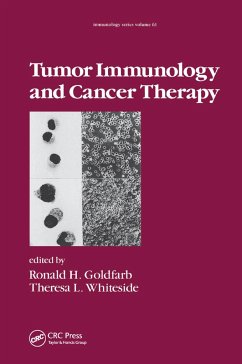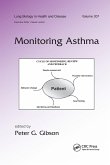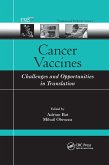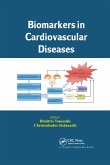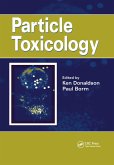R H Goldfarb
Tumor Immunology and Cancer Therapy
R H Goldfarb
Tumor Immunology and Cancer Therapy
- Broschiertes Buch
- Merkliste
- Auf die Merkliste
- Bewerten Bewerten
- Teilen
- Produkt teilen
- Produkterinnerung
- Produkterinnerung
Based on a Tumor Immunology Symposium held in Pittsburgh, this work provides comprehensive coverage of the most important aspects of tumor immunology. It reveals novel approaches to the immunotherapy of cancer and presents complex issues in an accessible manner.
Andere Kunden interessierten sich auch für
![Monitoring Asthma Monitoring Asthma]() Monitoring Asthma58,99 €
Monitoring Asthma58,99 €![Cancer Vaccines Cancer Vaccines]() Cancer Vaccines34,99 €
Cancer Vaccines34,99 €![Clinical Allergy and Asthma Management in Adolescents and Young Adults Clinical Allergy and Asthma Management in Adolescents and Young Adults]() Clinical Allergy and Asthma Management in Adolescents and Young Adults110,99 €
Clinical Allergy and Asthma Management in Adolescents and Young Adults110,99 €![Inhalation Toxicology Inhalation Toxicology]() Inhalation Toxicology110,99 €
Inhalation Toxicology110,99 €![Biomarkers in Cardiovascular Diseases Biomarkers in Cardiovascular Diseases]() Biomarkers in Cardiovascular Diseases92,99 €
Biomarkers in Cardiovascular Diseases92,99 €![Particle Toxicology Particle Toxicology]() Particle Toxicology91,99 €
Particle Toxicology91,99 €![Nutrition and Exercise Immunology Nutrition and Exercise Immunology]() Nutrition and Exercise Immunology91,99 €
Nutrition and Exercise Immunology91,99 €-
-
-
Based on a Tumor Immunology Symposium held in Pittsburgh, this work provides comprehensive coverage of the most important aspects of tumor immunology. It reveals novel approaches to the immunotherapy of cancer and presents complex issues in an accessible manner.
Hinweis: Dieser Artikel kann nur an eine deutsche Lieferadresse ausgeliefert werden.
Hinweis: Dieser Artikel kann nur an eine deutsche Lieferadresse ausgeliefert werden.
Produktdetails
- Produktdetails
- Verlag: Taylor & Francis Ltd (Sales)
- Seitenzahl: 344
- Erscheinungstermin: 5. September 2019
- Englisch
- Abmessung: 226mm x 152mm x 18mm
- Gewicht: 408g
- ISBN-13: 9780367402181
- ISBN-10: 0367402181
- Artikelnr.: 57733720
- Herstellerkennzeichnung
- Libri GmbH
- Europaallee 1
- 36244 Bad Hersfeld
- gpsr@libri.de
- Verlag: Taylor & Francis Ltd (Sales)
- Seitenzahl: 344
- Erscheinungstermin: 5. September 2019
- Englisch
- Abmessung: 226mm x 152mm x 18mm
- Gewicht: 408g
- ISBN-13: 9780367402181
- ISBN-10: 0367402181
- Artikelnr.: 57733720
- Herstellerkennzeichnung
- Libri GmbH
- Europaallee 1
- 36244 Bad Hersfeld
- gpsr@libri.de
Goldfarb\, R. H.
Part I. Introduction. Tumor-Associated Antigens and the Role of Antibodies
and Cellular Immunity in Cancer. The Immunogenicity of Foreign Monoclonal
Antibodies in Human Disease Applications: Problems and Current Approaches.
Additive and Synergistic Interactions of Monoclonal Antibodies and
Immunotoxins Reactive with Breast and Ovarian Cancer. Tumor Rejection
Antigens of the Chemically Induced BALB/5 Meth A Sarcoma. Part II.
Introduction. Antitumor Effector Cells: Characteristics and Basic
Mechanisms. Phenotypic and Functional Characteristics of Human A-NK Cells.
Regulation and Function of Fibronectin Receptors Expressed by Natural
Killer Cells. Growth Requirements, Binding and Migration of Human Natural
Killer Cells. Regulation of Monocytes by IL-2-Activated Killer Cells.
Identification and Enrichment of Proteolytic Enzymes of IL-2 Activated Rat
Natural Killer (A-NK) Cells: Potential Physiological Roles in NK Cell
Function. Part III. Introduction. Animal Models in Tumor Biology. Effects
of rhIL-7 on Leukocyte Subsets in Mice: Implications for Antitumor
Activity. Up-Regulation of Tumor Cell Sensitivity to Natural Cell-Mediated
Cytotoxicity by UV Light Irradiation. Studies on NK Cell Precursors in
Mice. Part IV. Introduction. Tumor Microenvironment and Immune Effector
Cells. Tumor-Infiltrating Lymphocytes in Human Solid Tumors. Localization
of Immune Effector Cells to Tumor Metastases. Anti-tumor Effector Cells:
Extravasation and Control of Metastasis I Tumor Microenvironment and Immune
Effector Cells: Isolation, Large Scale Propagation and Characterization of
CD8+ Tumor Infiltrating Lymphocytes from Renal Cell Carcinomas. Part V.
Introduction. Immunomodulation and Antitumor Mechanisms.
Interleukin-Induced Tumor Immunogenicity. Biological Significance of
Autologous Tumor Killing. Biological Response Modifiers and
Chemotherapeutic Agents that After Interleukin 2 Activities. Part VI.
Introduction. Immunotherapy of Tumors. New Perspectives in Immunotherapy of
Leukemia. The Role of Interferons in the Therapy of Melanoma. Therapy with
Interleukin-2 and Tumor-Derived Activated Lymphocytes. Combination Cytokine
Therapy in Cancer. Anti-Idiotype Antibodies: Novel Therapeutic Approach to
Cancer Therapy. Immunity and Cancer Therapy: Present Status and Future
Projections.
and Cellular Immunity in Cancer. The Immunogenicity of Foreign Monoclonal
Antibodies in Human Disease Applications: Problems and Current Approaches.
Additive and Synergistic Interactions of Monoclonal Antibodies and
Immunotoxins Reactive with Breast and Ovarian Cancer. Tumor Rejection
Antigens of the Chemically Induced BALB/5 Meth A Sarcoma. Part II.
Introduction. Antitumor Effector Cells: Characteristics and Basic
Mechanisms. Phenotypic and Functional Characteristics of Human A-NK Cells.
Regulation and Function of Fibronectin Receptors Expressed by Natural
Killer Cells. Growth Requirements, Binding and Migration of Human Natural
Killer Cells. Regulation of Monocytes by IL-2-Activated Killer Cells.
Identification and Enrichment of Proteolytic Enzymes of IL-2 Activated Rat
Natural Killer (A-NK) Cells: Potential Physiological Roles in NK Cell
Function. Part III. Introduction. Animal Models in Tumor Biology. Effects
of rhIL-7 on Leukocyte Subsets in Mice: Implications for Antitumor
Activity. Up-Regulation of Tumor Cell Sensitivity to Natural Cell-Mediated
Cytotoxicity by UV Light Irradiation. Studies on NK Cell Precursors in
Mice. Part IV. Introduction. Tumor Microenvironment and Immune Effector
Cells. Tumor-Infiltrating Lymphocytes in Human Solid Tumors. Localization
of Immune Effector Cells to Tumor Metastases. Anti-tumor Effector Cells:
Extravasation and Control of Metastasis I Tumor Microenvironment and Immune
Effector Cells: Isolation, Large Scale Propagation and Characterization of
CD8+ Tumor Infiltrating Lymphocytes from Renal Cell Carcinomas. Part V.
Introduction. Immunomodulation and Antitumor Mechanisms.
Interleukin-Induced Tumor Immunogenicity. Biological Significance of
Autologous Tumor Killing. Biological Response Modifiers and
Chemotherapeutic Agents that After Interleukin 2 Activities. Part VI.
Introduction. Immunotherapy of Tumors. New Perspectives in Immunotherapy of
Leukemia. The Role of Interferons in the Therapy of Melanoma. Therapy with
Interleukin-2 and Tumor-Derived Activated Lymphocytes. Combination Cytokine
Therapy in Cancer. Anti-Idiotype Antibodies: Novel Therapeutic Approach to
Cancer Therapy. Immunity and Cancer Therapy: Present Status and Future
Projections.
Part I. Introduction. Tumor-Associated Antigens and the Role of Antibodies
and Cellular Immunity in Cancer. The Immunogenicity of Foreign Monoclonal
Antibodies in Human Disease Applications: Problems and Current Approaches.
Additive and Synergistic Interactions of Monoclonal Antibodies and
Immunotoxins Reactive with Breast and Ovarian Cancer. Tumor Rejection
Antigens of the Chemically Induced BALB/5 Meth A Sarcoma. Part II.
Introduction. Antitumor Effector Cells: Characteristics and Basic
Mechanisms. Phenotypic and Functional Characteristics of Human A-NK Cells.
Regulation and Function of Fibronectin Receptors Expressed by Natural
Killer Cells. Growth Requirements, Binding and Migration of Human Natural
Killer Cells. Regulation of Monocytes by IL-2-Activated Killer Cells.
Identification and Enrichment of Proteolytic Enzymes of IL-2 Activated Rat
Natural Killer (A-NK) Cells: Potential Physiological Roles in NK Cell
Function. Part III. Introduction. Animal Models in Tumor Biology. Effects
of rhIL-7 on Leukocyte Subsets in Mice: Implications for Antitumor
Activity. Up-Regulation of Tumor Cell Sensitivity to Natural Cell-Mediated
Cytotoxicity by UV Light Irradiation. Studies on NK Cell Precursors in
Mice. Part IV. Introduction. Tumor Microenvironment and Immune Effector
Cells. Tumor-Infiltrating Lymphocytes in Human Solid Tumors. Localization
of Immune Effector Cells to Tumor Metastases. Anti-tumor Effector Cells:
Extravasation and Control of Metastasis I Tumor Microenvironment and Immune
Effector Cells: Isolation, Large Scale Propagation and Characterization of
CD8+ Tumor Infiltrating Lymphocytes from Renal Cell Carcinomas. Part V.
Introduction. Immunomodulation and Antitumor Mechanisms.
Interleukin-Induced Tumor Immunogenicity. Biological Significance of
Autologous Tumor Killing. Biological Response Modifiers and
Chemotherapeutic Agents that After Interleukin 2 Activities. Part VI.
Introduction. Immunotherapy of Tumors. New Perspectives in Immunotherapy of
Leukemia. The Role of Interferons in the Therapy of Melanoma. Therapy with
Interleukin-2 and Tumor-Derived Activated Lymphocytes. Combination Cytokine
Therapy in Cancer. Anti-Idiotype Antibodies: Novel Therapeutic Approach to
Cancer Therapy. Immunity and Cancer Therapy: Present Status and Future
Projections.
and Cellular Immunity in Cancer. The Immunogenicity of Foreign Monoclonal
Antibodies in Human Disease Applications: Problems and Current Approaches.
Additive and Synergistic Interactions of Monoclonal Antibodies and
Immunotoxins Reactive with Breast and Ovarian Cancer. Tumor Rejection
Antigens of the Chemically Induced BALB/5 Meth A Sarcoma. Part II.
Introduction. Antitumor Effector Cells: Characteristics and Basic
Mechanisms. Phenotypic and Functional Characteristics of Human A-NK Cells.
Regulation and Function of Fibronectin Receptors Expressed by Natural
Killer Cells. Growth Requirements, Binding and Migration of Human Natural
Killer Cells. Regulation of Monocytes by IL-2-Activated Killer Cells.
Identification and Enrichment of Proteolytic Enzymes of IL-2 Activated Rat
Natural Killer (A-NK) Cells: Potential Physiological Roles in NK Cell
Function. Part III. Introduction. Animal Models in Tumor Biology. Effects
of rhIL-7 on Leukocyte Subsets in Mice: Implications for Antitumor
Activity. Up-Regulation of Tumor Cell Sensitivity to Natural Cell-Mediated
Cytotoxicity by UV Light Irradiation. Studies on NK Cell Precursors in
Mice. Part IV. Introduction. Tumor Microenvironment and Immune Effector
Cells. Tumor-Infiltrating Lymphocytes in Human Solid Tumors. Localization
of Immune Effector Cells to Tumor Metastases. Anti-tumor Effector Cells:
Extravasation and Control of Metastasis I Tumor Microenvironment and Immune
Effector Cells: Isolation, Large Scale Propagation and Characterization of
CD8+ Tumor Infiltrating Lymphocytes from Renal Cell Carcinomas. Part V.
Introduction. Immunomodulation and Antitumor Mechanisms.
Interleukin-Induced Tumor Immunogenicity. Biological Significance of
Autologous Tumor Killing. Biological Response Modifiers and
Chemotherapeutic Agents that After Interleukin 2 Activities. Part VI.
Introduction. Immunotherapy of Tumors. New Perspectives in Immunotherapy of
Leukemia. The Role of Interferons in the Therapy of Melanoma. Therapy with
Interleukin-2 and Tumor-Derived Activated Lymphocytes. Combination Cytokine
Therapy in Cancer. Anti-Idiotype Antibodies: Novel Therapeutic Approach to
Cancer Therapy. Immunity and Cancer Therapy: Present Status and Future
Projections.

